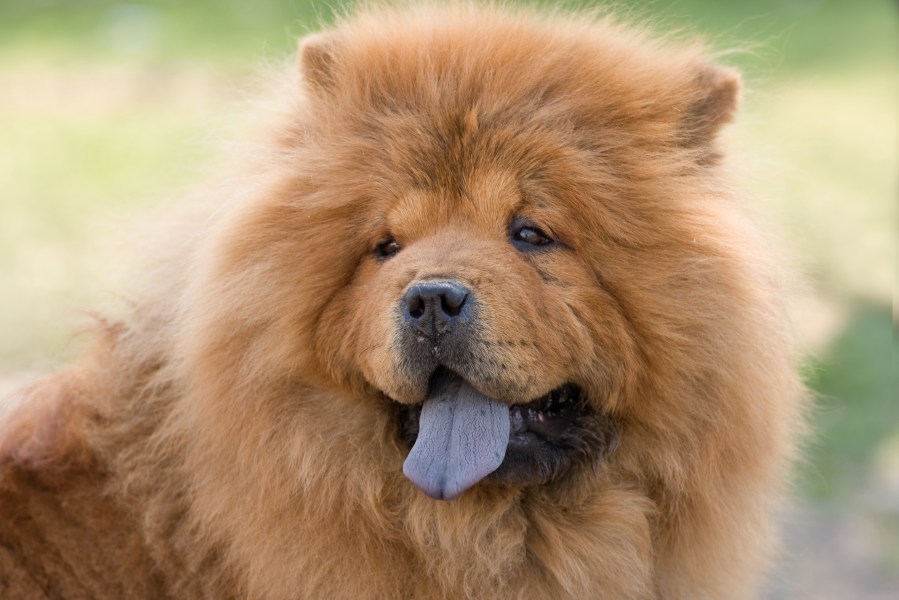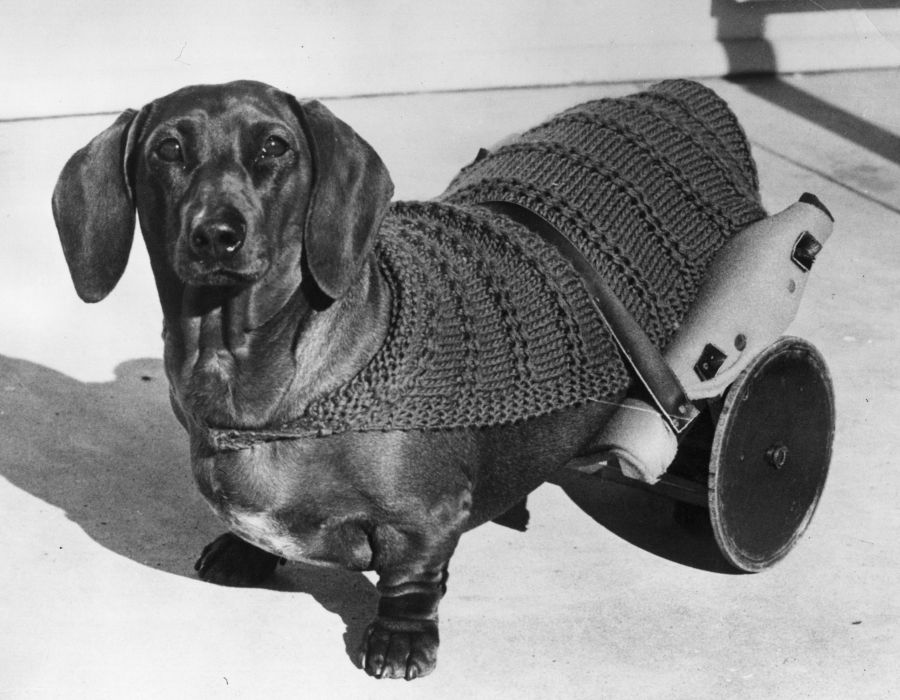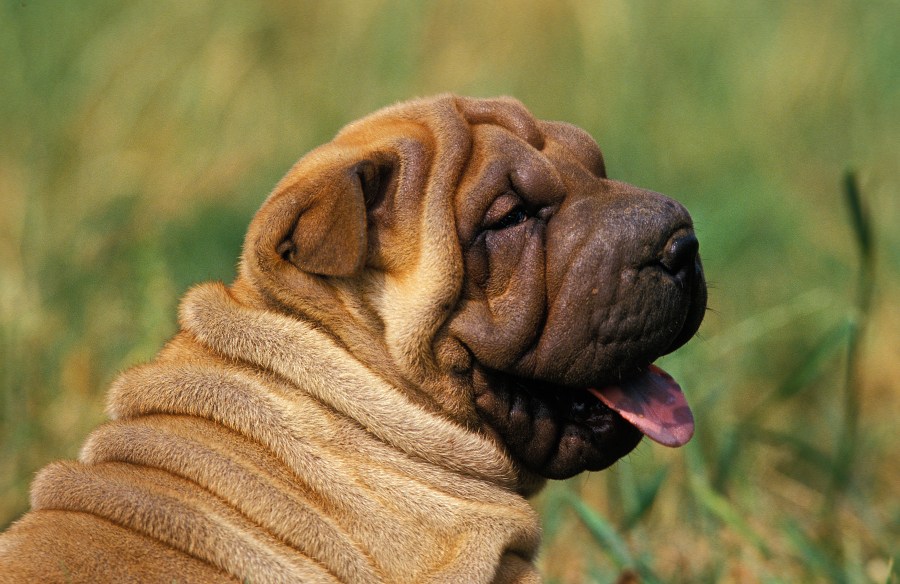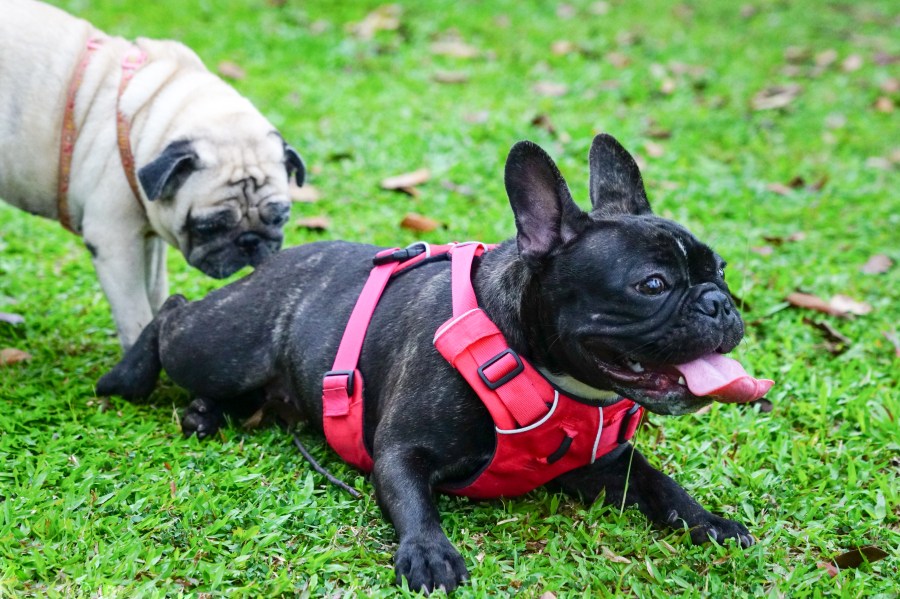(NEXSTAR) — No matter how experienced you are with pet care, getting a new dog can be intimidating. And depending which canine organization you ask, there are several hundreds of dog breeds in the world — how do you know which is the right one for you?
It’s not an easy question. In fact, it might be easier to narrow down dogs you don’t want first.
So we asked one of TikTok’s premier veterinarians, Ben Simpson-Vernon, also known as Ben the Vet, to elaborate on some of the dog breeds he wouldn’t own or recommend. While the U.K.-based vet underlines that these are only his opinions, the reasons why these breeds were singled out generally has to do with the animal’s welfare and not personal grievances.
These are the breeds he discussed.
Chow Chow
“I’m sure there are some nice ones but I just find they often don’t have a very nice temperament. They can be really aloof,” says Simpson-Vernon. “And they’re often very aggressive at the vet.”
The Chow Chow has appeared on several “most dangerous” dog breed lists, including Forbes’ 10 Most Dangerous Dog Breeds, at number 7. As of 2016, Forbes reported the breed accounted for 10 fatal attacks since 1982, in addition to 60 maimings.
This shouldn’t mean that Chow Chows are “bad” dogs, just that they are likely not a good fit for every family or every lifestyle. The American Kennel Club explains Chow Chows, which average around 45-70 pounds, lean more toward being watchdogs that prefer to be on their own versus with other dogs.
Additional problems Simpson-Vernon cites include:
- Difficulty finding muzzles that fit their larger faces
- Eye health problems. Among these, according to AKC, are eyelid entropion, which means their eyelids can roll inward and cause irritation and pain to the dog’s eyes. Some dogs will need entropion surgery to correct this, which Forbes estimates to cost between $300 and $2,000, on average
Lastly, Simpson-Vernon jokes: “And their purple tongues are a bit unnerving.” (See below).

Cavalier King Charles Spaniel
“Unfortunately, I have to name the Cavalier King Charles Spaniel,” says Simpson-Vernon. “They are the loveliest dogs and if I was gonna pick a dog breed for myself, it would be the Cavy — if it weren’t for all of their health issues.”
These health issues include:
- Mitral valve disease — This heart disease is very common in dogs but it’s especially common in Cavaliers. As explained by Virginia Tech’s Virginia-Maryland College of Veterinary Medicine, Cavaliers are also more likely to develop it at younger ages and with a higher severity than other breeds. What’s more, the college says there aren’t that many great treatment options for dogs with the disease. Simpson-Vernon adds, sadly: “Many of them spend their last days coughing and spluttering, struggling to breathe, and ultimately dying of heart failure.”
Simpson-Vernon makes a note, which will be discussed at length below, that breeding dogs who have high probabilities of disease or health problems is “not fair” to these dogs and should be considered.

Dachshund
It’s impossible not to love the weiner dog, properly known as a Dachshund. Simpson-Vernon laments that though these “sausage dogs” have terrific personalities, some very common (and painful) back problems make Dachshunds less desirable for some owners.
“The main reason Dachshunds are so prone to back problems is because the majority of them have a cartilage defect called chondrodystrophy,” he tells Nexstar. “This gives them their short legged body shape — but the defect also means that the cartilage in the discs in their spine commonly become diseased over time, eventually making them more likely to herniate (slip).”
He says that though this degeneration of the discs isn’t fully preventable, there are things owners can do to delay the effects. This includes reducing how much your Dachshund is jumping, in addition to avoiding them becoming overweight, which exacerbates disc issues.
Treatment for Dachshund back issues will depend on the severity but can range from rest and medication to spinal surgeries.
Simpson-Vernon adds: “Again, they have fantastic personalities but there’s too much potential for heartbreak.”

Shar-Pei
Their wrinkly faces may be immediately endearing but upon further analysis, their wrinkles (achieved through selective breeding) are actually the source of a variety of health issues for this breed.
“They even have a disease named after them called Shar–Pei fever,” says Simpson-Vernon.
Shar-Pei Fever, also known as Familial Shar-Pei Fever (FSF), is a chronic auto-inflammatory disorder that causes recurring fever and swelling. More seriously, the genetic condition can cause protein accumulation in the body, leading to organ failure.
Additionally, the Chinese-originated breed’s wrinkles contribute to a variety of other issues, including parasite infection, lip-fold pyoderma (a skin infection caused by excessive moisture in the folds of the lower jaw), and painful/odorous skin diseases.
Simpson-Vernon adds: “There are people breeding Shar-Peis with less exaggerated wrinkles but most of them are still too wrinkly. Most of the Shar-Peis that I see have loads of health issues.”

French bulldog, bulldog or a pug
These are Simpson-Vernon’s top pick for dogs he’d never own.
“Basically any flat-faced dog,” says Ben the Vet. “Society has normalized the fact that these dogs snorting means that they can’t breathe very well.”
The types of dogs with these faces are called brachycephalic, according to the Humane Society of the United States. This means breeds like pugs and bulldogs have shortened skulls and their air and windpipes are often obstructed because, basically, everything is packed into a small space.
In addition to breathing issues (which causes the animals to snort), these dogs can suffer from similar skin fold issues that vex Shar-Peis, not to mention:
- Mobility and back issues. Their short bodies also cause improper use of joints
- Digestion issues. Their short bodies can also mean improper bodily organ function
- Birthing problems. Also known as dystocia, brachycephalic breeds’ pelvises are very often too small for their puppies’ heads to fit through — which Simpson-Vernon explains is called “fetopelvic disproportion.” This means a great majority of these breeds must give birth via C-section, though overall, the presence of birthing issues at all vastly increases risks of death of the mother and/or her puppies
“The fact that over half of them have to have a cesarean to give birth is enough of an ethical issue for me to never want to have one,” he says. “If you’re OK with that, that’s fine. But for me, personally, it’s not very fair.”

Picking the “right” dog
Off the very top, Simpson-Vernon’s top tip for picking the “right” dog is not rushing into any decisions, since a dog will be a part of your life for a long time. He offers a few pieces of advice for prospective owners:
- Choose a breed or breed mix that will suit your lifestyle. This means researching what amounts of exercise and socializing a dog will require of you, both now and later. Do you plan on being away from home often? Do you plan on having children? Are you yourself in good enough health to care for a certain breed? These are all questions that should be considered
- Understand a dog’s potential health risks and your ability to respond to them. If caring for a certain type of dog will be too much of a financial strain, that breed or mix may not be right for you. If you do decide to pursue owning a more health risk-prone breed, Simpson-Vernon says to search for health-conscious and responsible breeders who run tests on their animals to reduce a breed’s common health issues. Having both pet insurance and savings for health calamities is also a must
Ethics of owning certain breeds
Finally, as mentioned many times above, ethical treatment and care of dogs is among Simpson-Vernon’s top priorities in his career and in his use of social media.
“I got into TikTok because I was frustrated seeing so many dogs falling ill or needing treatment for highly breed-specific health problems and wanted to try to spread some awareness of their problems,” he says.
Among the organizations/causes he links to on his Ben the Vet TikTok page is a Change.org petition started Oct. 15, which aims to demand mandatory breathing tests for bulldogs, French bulldogs and pugs. The petition, which is around 1,500 signatures short of its 10,000-signature goal, would be directed to the chairman of the Kennel Club in the U.K.
The vet explains that he hopes his use of TikTok — and his advocacy — help combat some of the “misinformation, bad trends and harmful content” he sees in the online pet health space.
He concludes: “When I became a vet, I swore an oath to protect animal welfare and I see my social media content as an extension of this.”





















